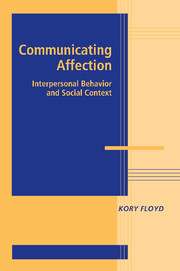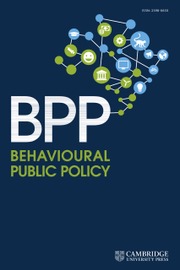The Cambridge Handbook of Violent Behavior and Aggression
The Cambridge Handbook of Violent Behavior and Aggression presents the current state of knowledge related to the study of violent behaviors and aggression. An important extension of the first Handbook published ten years ago, the second edition maintains a distinctly cross-disciplinary focus by representing the newest scholarship and insights from behavior genetics, cross-cultural comparative psychology/criminology, evolutionary psychology, criminal justice, criminology, human development, molecular genetics, neurosciences, psychology, prevention and intervention sciences, psychiatry, psychopharmacology, public health, and sociology. The Handbook is divided into introductory and overview chapters on the study of violent behavior and aggression, followed by chapters on biosocial bases, individual and interpersonal factors, contextual factors, and prevention and intervention work and policy implications. It is an essential resource for researchers, scholars, and graduate students across social and behavioral science disciplines interested in the etiology, intervention, and prevention of violent behavior and aggression.
- Presents a distinctly cross-disciplinary approach to the study of violence and aggression
- This second edition is brought fully up to date with the inclusion of new research on the etiology of violence and aggression, as well as new insights from intervention and prevention work
- Gives increased attention to new developments in neurobiology relating to violence and aggression
Reviews & endorsements
‘Books and articles dealing with violence abound in the professional literature, but few can compare with this one when it comes to both depth and breadth. Each chapter is thorough and grounded in a strong research foundation - both ‘classic' and ‘contemporary'. Any scholar or professional taking on the complex questions ‘who is violent?', ‘why are they violent?', “what can be done about it?' will find invaluable intellectual resources here.' James Garbarino, Loyola University, Chicago, author of Listening to Killers
‘Vazsonyi, Flannery, and DeLisi have assembled many of the leading authorities on a scientific approach to understanding violence and aggression into a singularly authoritative volume. It is distinguished by the multidisciplinary viewpoints represented as well as the broad set of perspectives, sectors of influence, and approaches included. A timely assessment of our current knowledge the compendium clearly draws theoretical, practical, and policy-related implications. It should guide work in the field for the coming decade.' Patrick H. Tolan, University of Virginia
‘The second edition gets better and better! This authoritative new violence handbook bears the intellectual stamp of its three world-renowned editors. It is uniquely multidisciplinary. Chapters cover the full range: from the very best etiological research on self-regulation, neuroscience, genetics, and bio-social criminology, to the very best research on practice and policy. Each and every chapter is easy to read, and all pack a big knowledge punch. This new Handbook is a priceless resource for scientists, students, practitioners, and anyone really who needs to be fully informed about violence.' Terrie E. Moffitt, Nannerl O. Keohane University Professor, Duke University, North Carolina, Professor of Social Behaviour and Development, Institute of Psychiatry London and Associate Director, University of Otago, New Zealand
Product details
September 2018Hardback
9781107180437
822 pages
254 × 179 × 40 mm
1.75kg
19 b/w illus. 14 tables
Available
Table of Contents
- Part I. Introduction and Overview:
- 1. Origins of violent behavior over the life span
- 2. Longitudinal study of personality and social development: insights about aggression after 5 decades
- 3. A life course model for the development of intimate partner violence
- 4. The dark violence hybrid: the cross-cultural validation of an integrative model
- Part II. Biosocial Foundations of Violence and Aggression:
- 5. The behavioral genetics of aggression and violent behaviour
- 6. Neuroimaging evidence of violence and aggression
- 7. Biosocial bases of aggression and antisocial behavior
- 8. The Neuropsychology of violence
- 9. The interaction of nature and nurture in antisocial behavior
- 10. The neurobiology of bullying victimization
- 11. Molecular genetics of aggression and violent crime
- 12. Biosocial foundations of drug abuse and violent delinquency
- 13. Personality and aggression: a general trait perspective
- Part III. Individual and Interpersonal Factors for Violence and Aggression:
- 14. Applying empirically-based trait models to an understanding of personality and violence
- 15. Social-cognitive processes in the development of antisocial and violent behavior
- 16: Violent juvenile offenders: a psychiatric and mental health perspective
- 17. Self-control theory and criminal violence
- 18. Peers and aggression: from description to prevention
- 19. Developmental processes of resilience and risk for aggression and conduct problems
- 20. Child abuse and neglect
- 21. The role of gender in violent and aggressive behaviors
- 22. Lessons learned: serial sex offenders identified from backlogged sexual assault kits (SAKs)
- 23. Research on social structure and cross-national homicide rates
- 24. Preventing violent crimes by reducing wrongful convictions
- 25. Strain theory and violent behavior
- 26. On cumulative childhood traumatic exposure and violence/aggression: the implications of adverse childhood experiences (ACE)
- Part IV. Contextual Factors for Violence and Aggression:
- 27. Youth gangs and violent behavior
- 28. Social networks and violence
- 29: The contagion of violence
- 30. School violence
- 31. Violence and culture in the United States
- 32. Violence prevention in a global context: progress and priorities for moving forward
- 33. Terrorism as a form of violence
- 34. Psychopharmacology of violence
- 35. Individual, family, neighborhood and regional poverty/socioeconomic status and exposure to violence in the lives of children and adolescents: considering the Global North and South
- 36. Firearms and violence
- Part V. Looking toward the Future:
- 37. The interrelationship of self-control and violent behavior: pathways and policies
- 38. The new frontier: leveraging innovative technologies to prevent bullying
- 39. Neural substrates of youth and adult antisocial behavior
- 40. Research designs and methods for evaluating and refining interventions for youth violence prevention
- 41. New directions in research on violence: bridging science, practice, and policy.











